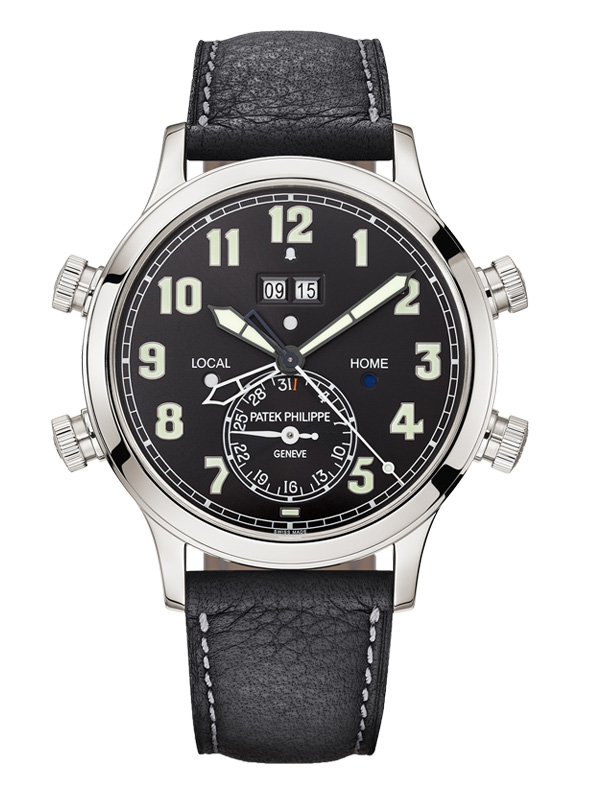“Voyages” by Patek Philippe, A journey through the history of the brand’s World and Travel Time Complications
By the mid 1930s the world had become a smaller place in terms of time. What started as a globally accepted implementation of time zones to avoid disaster with railway timetables, had become by the earlier decades of the 20th century, a means to change time on watches to the correct hour when travelling to a different place in the world.
It seems simple enough now, but then the realization that faster trains, ships, and the nascent state of commercial passenger airline travel created the need for an elegant and parsimonious approach to the problem of adjusting one’s watch to the correct local time. To celebrate Patek Philippe’s rich history in both, world and travel time complications, the eminent Swiss watchmakers recently put together a private exhibition, exclusively aimed at selected members of the press, retailers, distributors and of course, their most valued clients. Suitably named “Voyages” in the United Kingdom, the journey started in London, aboard the Northern Belle Pullman train, recalling the glamour and excitement of rail travel from about the time the World Time complication was patented, a time in which the journey was just as important as the destination, which in our case was Kirklington Hall in Oxfordshire.
The exhibition itself was a considerable feat: interactive displays, watches from the Patek Museum collection, as well as all models from the current references that include the World Time and Travel Time complications. From this year’s Baselworld fair, two watches stood out: the redesign of the cloisonné enamel dial world time (ref. 5231) and the grand complication travel time count down alarm pilots watch (ref. 5520) that included two new patented innovations in the mechanism. The world time complication was the invention of Louis Cottier – a well-known Genevois watchmaker – who developed a mechanism to change the time on a watch to the correct time zone (denoted by the city or region) using a pusher. Patek Philippe was one of the first to adopt Cottier’s solution, in their Patek Philippe ref. 515HU (for Heure Universelle). It was an instant success. The elegance of travel was enhanced by the watch on your wrist that could instantly adjust to the new time at your chosen location.

Cottier’s patented solution was so complete, that the basic same mechanism and dial layout are in evidence today. Obviously small improvements have been made, but it is essentially the same watch. Dial changes have included not only a change in place names, but equally in design. Today, as has been the case over the decades since its invention, some of these watches contain cloisonné enamel dials depicting a view (or part thereof) of the world. Patek’s pre-eminent place in the world time complication arena is not so much that the watches are Patek Philippe -although that is important-, but the consistency of the design and the mechanism, as well as the artistry and variations in the maps depicted in enamel.
What makes the vintage Patek World Time so alluring are the names of the lost places and forgotten civilizations that once occupied the world map. In its own way, the Patek World time tells a story of a changing world; change not only in terms of the pace of the world (we all look for quicker travel times) but also in the geopolitical alterations to the world map.
At the time of Cottier’s invention, London and Paris appeared in the same time zone. Paris had expected to be named the Meridian city in 1884 – but lost to London. Paris – partially in protest – stayed on its own time zone until 1940 when it joined European Central. There was an expectation that Paris would exit this time zone and revert back, so watchmakers kept Paris on the same time as London! “Californie” was one time zone away from Klondike, a region that is now on the same time zone as California and subsumed within Alaska, but in the 1940s, was still fresh in the minds of those who believed riches lay in a remote region on the western edge of Canada and that the gold that adorned the Patek World Time watch could be found in the streams and mountains of that far distant land. Aden was a place of its own importance, but the importance and its place on the Patek world time dial has been forgotten. This year’s new World Time (ref. 5231) has its own significance as Beijing replaces Hong Kong on the dial.

Another way to look at the problem of time zones and time difference in watches is to provide another hour hand on the dial. One hand stays on home time, the other on the time at the location. Ideal for pilots. This year’s ref. 5520P pilots watch acknowledges just that: a travel time complication with a count down alarm set to a required time limit, for when you need to know how much time has elapsed on your journey. What was and is obvious from the Voyages exhibition and from this year’s new release watches within the World and Travel Time complications is that Patek Philippe keeps working to maintain these two complications as current and relevant to today’s discerning watch collectors and enthusiasts as they were back when Louis Cottier patented the first mechanism. The journey is far from over!

















Show Comments +